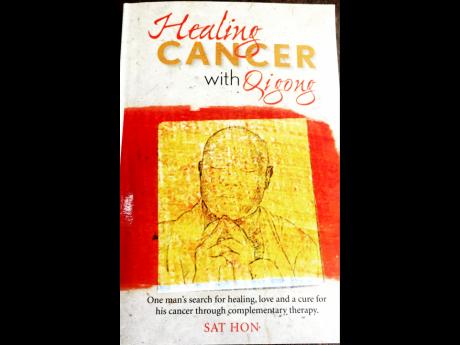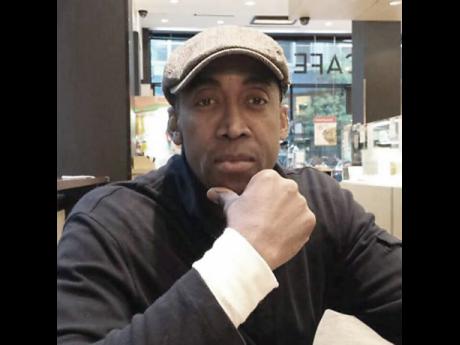A captivating journey of healing and redemption
Book: Healing Cancer with Qigong: One Man's Search for Healing, Love and a Cure for his Cancer through Complementary Therapy
Author: Sat Hon
"One thing is certain: qigong saved my life and strengthened my body and soul to withstand the toxic effects of chemotherapy."
- Sat Hon
"You have lymphoma." I watched in slow motion as my wife, Janet, teetered, faltered, and finally crumbled to the floor."
Sat Hon relives the indelibly wrenching moment when cancer had invaded another life - his own - just one of thousands of lives stricken at any given time. It's a blitzkrieg that has weakened the defences of the most stoic of men. Surely, the survival rate has increased over the years, but the war is far from won.
In Healing Cancer with Qigong, Sat Hon unveils a compelling, authentic narrative of his struggle with a ruthless, unbridled enemy.
Hon traverses the rugged, undulating planes of his journey with a mix of trepidation and hope. It is a journey, a haunting that finds its way into the bosom of his family. For sure, cancer gains a foothold into the psyche of more than one individual. It's pervasively lethal, with an armada capable of collateral damage. He bears the brunt of its assault but he is never truly forsaken. Hon's survival necessitates an allied response.
Hon details his battle in vivid, descriptive language, if only to accentuate the exigency, the desperation of a beleaguered soul.
His is a story rooted in paradoxes. He, the doctor of traditional Chinese medicine, a qigong instructor, an alternative medical practitioner - a paragon of health - falling prey to the very disease that he had once treated so successfully. Contracting a potentially fatal disease can be a sobering, humbling experience. No one, not even someone adept in the mantic arts saw this trajectory.
CROSSROADS OF LIFE & DEATH
He recalls, "I suspected my clients and students were frightened by my sickness. One in particular felt devastated and betrayed. I visualise her eyes, narrowing in a state of shock, her mouth opening on a slow-motion scream. "How could you have got cancer? You're a healer after all!" Some left scattering off to seek better qigong masters and healthier healers ... . My wife and three daughters were still the only ones on board my small kayak as I navigated the eerie, icy labyrinth within the vast desolate landscape."
At the crossroads of life and death, Hon is forced to make existential decisions. Initially, he resorts to what he knows best: his culture, his training in alternative healing modalities. He writes, "I had chosen to pursue an alternative healing route which included an intense course of dietary supplements, qigong, meditation, fasting and daily self-administered acupuncture treatments."
But to no avail. The cancer continued its bristling march. This proved the most foreboding time in Hon's life. His vulnerability was never more evident.
Later, though, Hon regroups. The importance of balance, the essence of yin and yang philosophy, the very essence of Eastern thought dawn on him. Hon could well credit his survival to this truth.
As his condition deteriorates, he seeks the guidance of Western physicians who, fortuitously, embraced complementary medicine. The convergence of two major approaches to healing are adopted.
Balance is restored. Finally, a light shines bright at the end of the tunnel.
Hon reflects, "As [his doctor] started to speak, I felt a distinctive internal clock of connection as I recognised the possible complement of alternative healing methods with standard Western medical treatment."
Good health requires understanding and applying the medicinal properties of nature. Qigong masters like Hon have long absorbed these 'medicines' through a range of practices - controlled breathing, herbalism, long walks in nature, postures, vegetarianism, acupuncture, and Tui Na.
Shedding light on the philosophy behind the practices that cultivate Qi (healing energy), Hon writes, "... human beings are small creatures ... intrinsically related to the Earth and the whole fabric of life. To live in harmony with nature, we have to explore the hidden forces and principles that govern life." He elaborates, "To begin this journey of self-discovery, we must first acquire a key to this internal landscape: our own microcosm." Hon beckons us to grasp the teachings of Qigong (energy cultivation), one of the pillars of traditional Chinese medicine (TCM) that originated "thousands of years before the Egyptians built the pyramids."
Hon's revelation is tangible, majestically clothed in an unswerving sense of knowing. His is a piercing insight into destiny and the human will. On his literary canvas he artistically embeds the philosopher's stone, wisdom of the ages.
"Undeniably, the essence of complementary healing is the inclusiveness of the spontaneous self-healing power," he writes, and considers his book "a guide to the complimentary approach towards healing cancer".
He cites the pioneering contribution of Gou Lin, herself a cancer survivor, who created the Healing Walk Qigong, and explains the methodology and physiology behind its effectiveness. Undoubtedly, the Healing Walk is a boon, a timeless treasure that is arguably one of the most important components of this work.
Karma shadows our every journey. It is life, the way of providence. With knowledge of self and life's purpose, we are poised to respond to the greatest of challenges. Only then are we karmically rewarded - a meed bestowed by the cosmic for our faith and steadfastness, a meed that Sat Hon has so graciously embraced.
Healing Cancer with Qigong: One man's search for healing, love and a cure for his cancer through complementary therapy by Sat Hon
Publisher: Ancient Taoist Practice Society, Inc.
ISBN 9781500854133
Available at Amazon
Ratings: Essential
- Feedback: glenvilleashby@gmail.com or follow him on Twitter@glenvilleashby.


